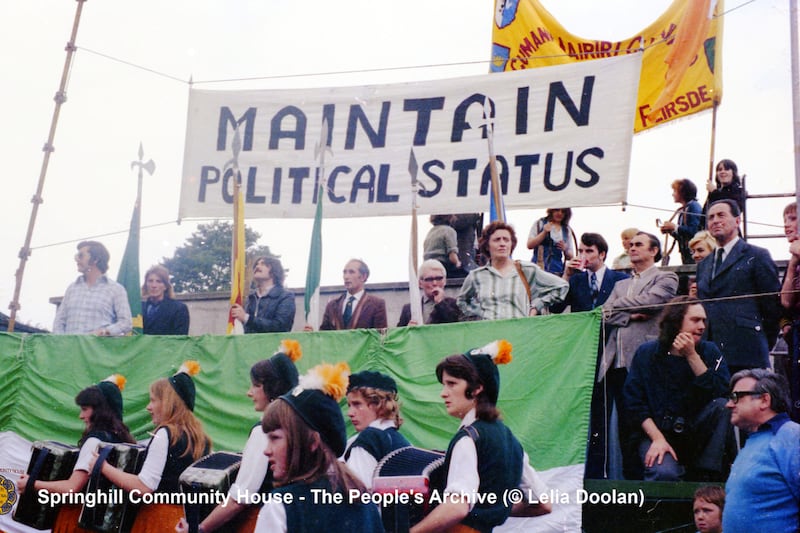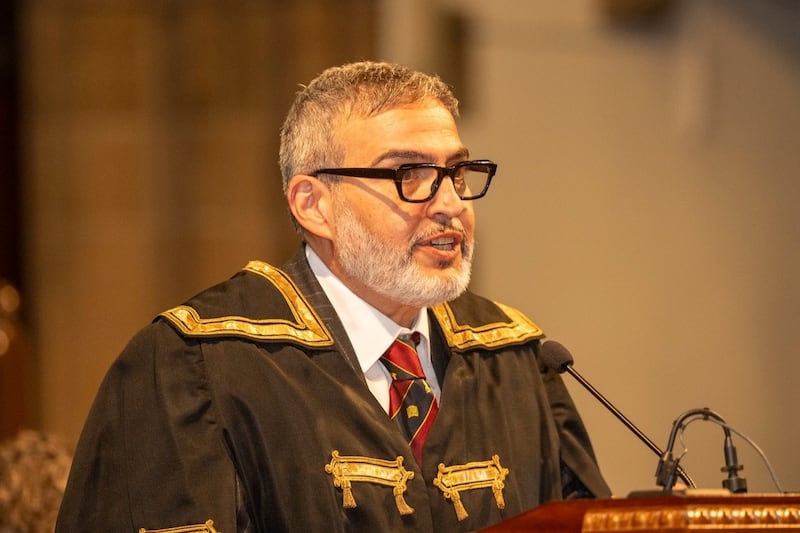Fresh photographs of IRA hunger striker Bobby Sands have emerged after almost 50 years.
The images from August 1976 show the then 22-year-old taking part in the first protest against the withdrawal of political status for prisoners in Long Kesh.
Sands is photographed carrying a flag as the protest makes its way down the Andersonstown Road in west Belfast.
In a second shot, he is pictured on a platform in Dunville Park off the Falls Road, alongside senior republicans, including Máire Drumm, Danny Morrison and Joe Stagg, whose brother Frank had died on hunger strike in Wakefield Prison six months previous.
Mrs Drumm, the then vice-president of Sinn Féin and one of the speakers at the rally, was arrested shortly afterwards and jailed for 18 days for taking part in an illegal procession.
She was shot dead two months later in the Mater Hospital by gunmen dressed as medical staff.
Pictured next to her at the rally is Sinn Féin member Aindrias O Callaghan from Dublin, who would give the oration at the leading republican’s funeral in Milltown Cemetery.
Sands, who five years later would gain global notoriety when elected MP Fermanagh and South Tyrone while on hunger strike, had been released from Long Kesh in April 1976, where he had been a political prisoner.

He was arrested in October 1976 and sentenced to 14 years in prison.
Along with other republican prisoners, he spent several years ‘on the blanket’, protesting against the withdrawal of political status.
The protest would culminate in the 1981 hunger strike in which he and nine other prisoners died.
The recently-unearthed photographs were discovered by researcher Ciaran Cahill, who was working on the late Fr Des Wilson’s ‘People’s Archive’ in Springhill House, Ballymurphy.
He was scanning negatives of photographs donated by Lelia Doolan, a keen photographer and friend of Fr Des, who chronicled life in Ballymurphy between 1974-77, while studying for a PhD in anthropology at Queens University.
Cork-born Doolan, who turned 90 earlier this year, photographed many scenes in Belfast, including Sandy Row.

She later became the head of light entertainment at RTÉ, artistic director of the Abbey Theatre and directed ‘Bernadette: Notes on a Political Journey’, the acclaimed documentary about Bernadette Devlin-McAliskey.
When cataloguing the negatives, Mr Cahill first recognised Máire Drumm. When he developed the images, he recalled similar photographs by French photographer Gérard Harlay which were discovered and published in 2019.
Both sets of images are of the same protest, the first of many against the British government’s withdrawal of political status.
Danny Morrison, secretary of the Bobby Sands Trust, said: “These photographs, from almost 50 years ago, are quite evocative, especially when one considers the tragic fates of Máire Drumm and Bobby Sands.
“I had forgotten that I was covering the protest for our newspaper and it was a surprise to see my younger self, then 23, but even then we instinctively knew that the attempt to criminalise the struggle for Irish independence, as in previous periods, would ultimately fail. However, we had no idea of the magnitude of the suffering to come, inside and outside the prisons, for all those entrapped by this British policy.”








